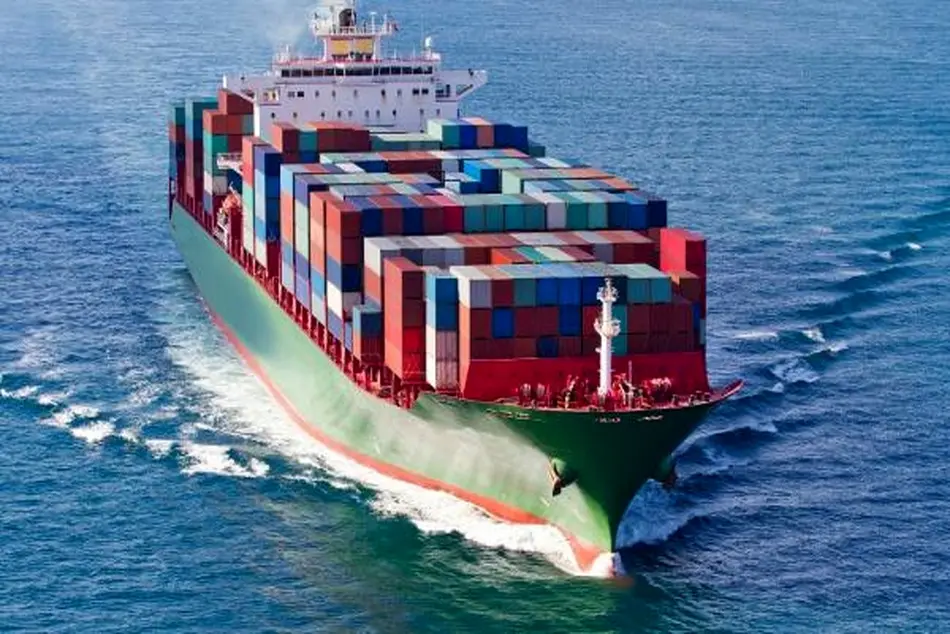The four reasons Singapore will ride out the shipping storm

Singapore’s biannual Maritime Week recently concluded. Despite the celebrations and accolades handed out, the cloud of a depressed and struggling sector hung heavy over the industry. Although we may (hopefully) be seeing the green shoots of a shipping recovery, companies are still under a huge amount of pressure. Shipping is cyclical, and right now, we still seem to be on the wrong side. A number of international commentators have recently pushed the view that the local shipping and offshore sectors are in a state of terminal decline. Singapore is too expensive; the competition is too fierce; too many companies are struggling; even the government is too involved.
However, Maritime Week highlighted just why Singapore is well-positioned to ride out the storm. It became clear that there are a number of key, long-term, strategic efforts underway to position Singapore as the shipping hub for the next 50 years. The future of the industry is looking very different and to a large degree will be dependent on a series of key developmental initiatives.
1.) Investment in technology and innovation
If there is one industry which is ripe for technological disruption, it is shipping. In fairness, if I knew where this disruption was going to come from I’d have quit my day job. Automated vessels are probably a little further off than some are predicating, but there is a lot of tech advancement to be excited about.
While vessels will have specific use-requirements (containers, bulkers, LNG carriers etc.), the technology that goes into ocean-going and onshore operations, performance monitoring, and increasing efficiencies is evolving at a rapid rate.
Listening to the ideas that are in the market, it is clear that change is in the air. The countries which can best attract tech experts, ideas, and innovators are the ones who will come out on top. Like in any competition for high-tech R&D and startups, supporting infrastructure is vital. In this regard, Singapore has invested heavily in innovation and technology—and we will continue to do so to stay ahead of the technological curve. This is the key race that needs to be won as this is the very future of shipping.
2.) Investment in education
As the shipping and offshore sectors develop and digitize, the required skillsets of current and future employees will also change. Delivering high quality, industry-relevant, education will be vital to meeting the needs of business. Singapore was recently named one of the top five national education providers and the academic infrastructure is already in place to meet the needs of the industry.
The maritime education qualifications provided by the government are already being expanded and internationalized to attract high-quality students. This is not something that is easily or quickly replicated by other countries, and positions Singapore strongly as the leading source of operations and managerial leaders.
3.) Investment in people
Although only sporadically covered in the shipping trade, the shipping industry has some major demographic issues. Decades of simply ignoring the need for the industry to have an employment brand strong enough to compete for the best talent (or second best, or third…) means a rapidly ageing workforce won’t be replaced easily. Getting people into the sector is critical to the ongoing development of the local industry. The Singapore government has put in place a number of measures to provide pathways into the sector and to promote shipping as a viable career. We are attractive and will continue to be so.
4.) Government and institutional support
The Singapore government’s continued support for the shipping and offshore sectors is key to Singapore retaining its position as a maritime leader. Countries like Singapore, China, and even Greece have made a strategic decision to develop the industry as an economic priority. The above points all need state support in one form or another. Additionally, tax incentives, rule of law, and investment in infrastructure are all crucial to keeping Singapore on the shipping map. All efforts are currently in place in this little island (government, regulatory, as well as private sector) to maintain our status as a leading shipping hub.
Here, again, Singapore comes out on top. If we gaze into the foggy future, and autonomous vessels are indeed commonplace, where will these ships be run from? Huge datacentre, satellite, and telco facilities will be needed. Software development and cybersecurity services will be part of day-to-day business.
For Singapore, what shipping looks like may be less vessels in the anchorage (but maybe not), but this may not be the future of shipping. As Singapore well knows, being a leader means making bold strategic decisions, driving what the future is going to look like, and providing the resources to achieve this.
The Singapore maritime sector isn’t dying, it is changing. And it has to because the future of shipping will be different. Our critics will, no doubt, point out every local company struggling, and cheer on new ports in Malaysia and Silk Roads; but this is just the ebb and flow of business-as-usual. Singapore is looking ahead, and is well placed to lead the future of the shipping industry.
The four reasons Singapore will ride out the shipping storm BY JUNE HO Singapore’s biannual Maritime Week recently concluded. Despite the celebrations and accolades handed out, the cloud of a depressed and struggling sector hung heavy over the industry. Although we may (hopefully) be seeing the green shoots of a shipping recovery, companies are still under a huge amount of pressure. Shipping is cyclical, and right now, we still seem to be on the wrong side. A number of international commentators have recently pushed the view that the local shipping and offshore sectors are in a state of terminal decline.
Singapore is too expensive; the competition is too fierce; too many companies are struggling; even the government is too involved. However, Maritime Week highlighted just why Singapore is well-positioned to ride out the storm. It became clear that there are a number of key, long-term, strategic efforts underway to position Singapore as the shipping hub for the next 50 years. The future of the industry is looking very different and to a large degree will be dependent on a series of key developmental initiatives. 1.) Investment in technology and innovation If there is one industry which is ripe for technological disruption, it is shipping. In fairness, if I knew where this disruption was going to come from I’d have quit my day job. Automated vessels are probably a little further off than some are predicating, but there is a lot of tech advancement to be excited about.
While vessels will have specific use-requirements (containers, bulkers, LNG carriers etc.), the technology that goes into ocean-going and onshore operations, performance monitoring, and increasing efficiencies is evolving at a rapid rate. Listening to the ideas that are in the market, it is clear that change is in the air. The countries which can best attract tech experts, ideas, and innovators are the ones who will come out on top. Like in any competition for high-tech R&D and startups, supporting infrastructure is vital. In this regard, Singapore has invested heavily in innovation and technology—and we will continue to do so to stay ahead of the technological curve. This is the key race that needs to be won as this is the very future of shipping. 2.) Investment in education As the shipping and offshore sectors develop and digitize, the required skillsets of current and future employees will also change. Delivering high quality, industry-relevant, education will be vital to meeting the needs of business.
Singapore was recently named one of the top five national education providers and the academic infrastructure is already in place to meet the needs of the industry. The maritime education qualifications provided by the government are already being expanded and internationalized to attract high-quality students. This is not something that is easily or quickly replicated by other countries, and positions Singapore strongly as the leading source of operations and managerial leaders. 3.) Investment in people Although only sporadically covered in the shipping trade, the shipping industry has some major demographic issues. Decades of simply ignoring the need for the industry to have an employment brand strong enough to compete for the best talent (or second best, or third…) means a rapidly ageing workforce won’t be replaced easily. Getting people into the sector is critical to the ongoing development of the local industry. The Singapore government has put in place a number of measures to provide pathways into the sector and to promote shipping as a viable career. We are attractive and will continue to be so. 4.) Government and institutional support The Singapore government’s continued support for the shipping and offshore sectors is key to Singapore retaining its position as a maritime leader.
Countries like Singapore, China, and even Greece have made a strategic decision to develop the industry as an economic priority. The above points all need state support in one form or another. Additionally, tax incentives, rule of law, and investment in infrastructure are all crucial to keeping Singapore on the shipping map. All efforts are currently in place in this little island (government, regulatory, as well as private sector) to maintain our status as a leading shipping hub. Here, again, Singapore comes out on top. If we gaze into the foggy future, and autonomous vessels are indeed commonplace, where will these ships be run from? Huge datacentre, satellite, and telco facilities will be needed. Software development and cybersecurity services will be part of day-to-day business. For Singapore, what shipping looks like may be less vessels in the anchorage (but maybe not), but this may not be the future of shipping. As Singapore well knows, being a leader means making bold strategic decisions, driving what the future is going to look like, and providing the resources to achieve this. The Singapore maritime sector isn’t dying, it is changing.
And it has to because the future of shipping will be different. Our critics will, no doubt, point out every local company struggling, and cheer on new ports in Malaysia and Silk Roads; but this is just the ebb and flow of business-as-usual. Singapore is looking ahead, and is well placed to lead the future of the shipping industry.



